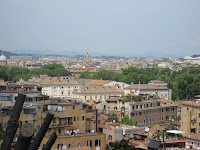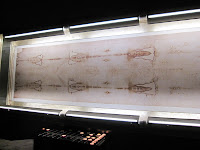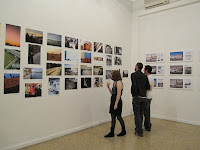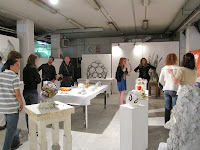

I leave Rome tomorrow! It has been a really great semester for me here in Italy; it's hard for me to believe that I have been able to visit most of the major sites of Rome, Venice, Milan, Ravenna, and Sicily while I've been here, plus went to Tunisia for a week and went to Naples, Pisa, Orvieto, Florence, and a few other small towns outside the city. I've seen Italy from top to bottom, plus a little of Africa!
This past week, amid and after finals, I've been trying to see the last few things on my list. Here are some of them:


The Ludus Magnus, gladiatorial training school next to the Colosseum. At right, view of Trastevere from S. Pietro in Montorio


Moses statue by Michelangelo; silver and gilt statue of St. Ignatius in Il Gesu. Having seen Moses, I can now say that I've seen all three of the Michelangelo statues in Rome!

The Ara Pacis, Altar of Peace built by Augustus, now in a modernist Richard Meier building


Details of the Ara Pacis


Medieval mosaic from San Clemente; copy of the shroud of Turin in Santa Croce


Imitation Etruscan temple superstructure at the Villa Giulia (National Etruscan Museum); at right, Bramante's Tempietto at San Pietro in Montorio


Renzo Piano's Auditorium in the Parco della Musica
At the end of last week was the Student Show with artwork from all the art classes offered at Temple Rome. I had a few prints in the show, which was quite well attended and full of interesting artwork! I have really enjoyed being at a school with lots of art students and where art is the focus of most students' studies instead of a hobby or vague interest.


Photography, Advanced Printmaking


Painting, Sculpture
I think my favorite part of the semester, aside from my trip to Tunisia, was learning how to cook Italian food and wandering around the Baths of Caracalla on a sunny day. When the weather is nice in Rome, the city is really beautiful. And I have discovered that I never get tired of Italian food! Rome has been great, but I'm glad to be going home after four months of travel. See you soon!
Comments
Post a Comment